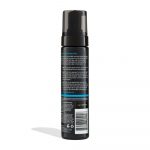Last Updated on 10 months by Francis
.jpg)
LED lights have become increasingly popular in various applications, including indoor lighting. However, when it comes to tanning, there is often confusion and curiosity surrounding the use of LED lights. In this article, we will explore the relationship between LED lights and tanning to provide a clear understanding of the topic.
Introduction to LED Lights and Tanning:
LED lights, or Light-Emitting Diodes, are a type of energy-efficient lighting that has gained popularity due to their longevity and versatility. They produce light in a different way compared to traditional light bulbs, using semiconductors to convert electrical energy into light. LED lights are available in various colors and are commonly used for illuminating spaces.
How do LED Lights Work?
To understand the connection between LED lights and tanning, it is essential to comprehend how LED lights work. LED lights generate light by passing an electrical current through a semiconductor material. When the electrical current passes through the material, it emits photons of light. The color of the emitted light depends on the specific materials and techniques used in the LED manufacturing process.
What is a Tan?
Before we delve into the relationship between LED lights and tanning, let’s briefly define what a tan is. A tan refers to the darkening of the skin due to increased production of a pigment called melanin. Melanin is produced by specialized skin cells called melanocytes in response to exposure to ultraviolet (UV) radiation from the sun.
How Does the Sun Cause Tanning?
When our skin is exposed to UV radiation from the sun, it triggers the production of melanin in melanocytes. Melanin acts as a protective mechanism for the skin by absorbing and dissipating UV radiation. The increased melanin production results in the darkening of the skin, commonly known as a tan.
Can LED Lights Give You a Tan?
Now, the question arises: Can LED lights give you a tan? The answer is no. LED lights used for general lighting purposes do not emit UV radiation, which is necessary to stimulate the production of melanin and induce tanning. LED lights primarily produce visible light without the presence of UV rays.
Do LED Lights Emit UV Radiation?
LED lights used for standard lighting purposes are designed to minimize or eliminate the emission of UV radiation. High-quality LED lights undergo extensive testing and are manufactured to ensure the absence of UV rays in their output. Therefore, the use of conventional LED lights for illumination will not result in a tan.
Can LED Lights Stimulate Melanin Production?
Without UV radiation, LED lights cannot stimulate the production of melanin in the same way that sunlight does. Melanin production is specific to UV radiation exposure, and LED lights lack this crucial element to trigger melanin synthesis.
Are There Specific LED Lights for Tanning Purposes?
While standard LED lights cannot provide a tan, there are specialized LED devices available that incorporate UV radiation to stimulate melanin production for tanning purposes. These devices utilize a combination of UV LEDs and visible LEDs, providing a controlled dosage of UV radiation to induce tanning. However, it is crucial to use such devices with caution and follow recommended usage guidelines to avoid overexposure.
What are the Potential Risks of Tanning with LED Lights?
Tanning with LED lights that emit UV radiation carries potential risks. Overexposure to UV radiation can result in skin damage, such as sunburn, premature aging, and an increased risk of skin cancer. Prolonged exposure to UV radiation from any source should be approached with caution and undertaken within recommended limits to minimize these risks.
Can LED Lights Cause Skin Damage?
When used for general lighting purposes, LED lights do not emit significant levels of UV radiation and, therefore, do not cause skin damage. However, as mentioned earlier, specialized LED devices that incorporate UV LEDs should be used with caution to prevent skin damage and other associated risks.
Can Prolonged Exposure to LED Lights Lead to Skin Cancer?
Prolonged exposure to UV radiation from any source, including specialized LED devices, can increase the risk of skin cancer. It is essential to adhere to recommended exposure guidelines and consult with a healthcare professional for advice specific to your individual circumstances.
Contents
Key takeaway:
- LED lights do not give you a tan: LED lights do not emit UV radiation, which is necessary for the production of melanin and the tanning process. Therefore, they do not have the ability to give you a tan.
- LED lights are safe for the skin: Unlike UV radiation, LED lights do not cause skin damage or increase the risk of skin cancer when used for tanning purposes.
- Specific LED lights for tanning: While LED lights do not tan the skin, there are specific LED lights available for providing a warm and natural glow, enhancing the appearance of a tan achieved through other methods.
How do LED Lights Work?
LED lights, or Light Emitting Diodes, work by using a semiconductor to emit light when an electric current is passed through it. This is different from traditional incandescent or fluorescent bulbs, which use a filament or gas to produce light. LED lights function by passing an electrical current through a microchip, which then illuminates the tiny light sources known as LEDs. These LEDs are composed of different materials, which determine the color of the light they emit. Moreover, the microchip also controls the brightness and intensity of the light. LED lights are known for their energy efficiency, lasting up to 25 times longer than traditional bulbs and consuming 75% less energy. Additionally, they emit less heat, making them a safer lighting option. These characteristics make LED lights ideal for various applications, including residential and commercial lighting, automotive lighting, and electronic displays. They are also widely used in smartphones, televisions, and computer screens. Switching all the light bulbs in my house to LED bulbs proved to be a prudent decision. Not only did I experience a significant decrease in my energy bills, but the LED lights also surpassed traditional bulbs in terms of lifespan. The quality of light they emitted was also remarkable, providing a brighter and more natural illumination throughout my home. It was truly astonishing to witness how such a small change could have such a profound impact on my daily life. LED lights have certainly revolutionized the way we illuminate our homes and businesses.
What is a Tan?
A tan is a darkening of the skin that occurs when the body’s melanin, a pigment responsible for skin color, increases in response to UV radiation from the sun or artificial sources like tanning beds. Melanin works by absorbing UV rays to protect the skin from excessive damage. The more melanin produced, the darker the skin becomes. Tanning is the body’s natural way of protecting itself from further harm caused by UV exposure.
True story: A friend of mine once went on a tropical vacation and spent hours sunbathing by the pool without sunscreen. He wanted a deep tan and thought it would make him look more attractive. However, he ended up getting a severe sunburn instead. His skin was painfully red and blistering. This experience taught him an important lesson about the importance of sun protection and the dangers of excessive UV exposure. Now, he always wears sunscreen and seeks shade during the hottest hours of the day to prevent further damage to his skin.
What is a Tan? A tan is the darkening of the skin that happens when the body’s melanin responds to UV radiation, whether from the sun or tanning beds. Melanin is the pigment responsible for our skin color and it functions by absorbing UV rays to shield the skin from excessive harm. When more melanin is produced, the skin becomes darker. Hence, tanning serves as the body’s natural defense mechanism to protect itself from further damage caused by UV exposure.
How Does the Sun Cause Tanning?
The sun causes tanning by emitting ultraviolet (UV) radiation. When the skin is exposed to UV radiation, it triggers the production of melanin, a pigment responsible for giving the skin its color. Melanin acts as a natural defense mechanism, absorbing UV radiation and preventing it from penetrating deeper into the skin.
UV radiation consists of two types: UVA and UVB. UVA penetrates deep into the skin and is responsible for immediate tanning, while UVB affects the outer layers of the skin and leads to delayed tanning. Both UVA and UVB radiation can cause damage to the skin and increase the risk of skin cancer.
When the skin detects UV radiation, it stimulates the production of melanocytes, which are cells responsible for producing melanin. These melanocytes produce melanin and transfer it to other skin cells, resulting in the darkening of the skin.
It is important to note that excessive exposure to the sun’s UV radiation can lead to sunburn, premature aging of the skin, and an increased risk of skin cancer. Therefore, it is crucial to protect the skin by wearing sunscreen, seeking shade during peak sun hours, and wearing protective clothing when spending time outdoors. How Does the Sun Cause Tanning?
Can LED Lights Give You a Tan?

Photo Credits: Infraredforhealth.Com by Keith Ramirez
Can LED Lights Give You a Tan?
LED lights do not give you a tan. Tanning occurs when the skin is exposed to ultraviolet (UV) radiation, typically from the sun or tanning beds. LED lights, on the other hand, do not emit UV radiation. They produce light using light-emitting diodes, which do not have the same wavelength as UV rays. Therefore, it is not possible to get a tan from LED lights. If you are looking to achieve a tan, you will need to seek exposure to UV radiation from sunlamps or natural sunlight. It’s important to note that excessive UV exposure can be harmful to the skin and increase the risk of skin cancer. So, if you want to maintain a healthy tan or protect your skin, it is important to practice safe sun exposure and use sunscreen with a high SPF. Stay informed and take care of your skin when considering tanning methods.
Do LED Lights Emit UV Radiation?
LED lights do not emit UV radiation. Unlike traditional tanning beds that utilize UV bulbs to stimulate melanin production, LED lights use a different technology that does not produce UV rays. LED lights work by emitting specific wavelengths of light that can penetrate the skin and stimulate collagen production, promoting a more youthful appearance. However, these lights do not have the same effects on the skin as natural sunlight or UV radiation. Therefore, LED lights are safe to use without the risk of harmful UV exposure.
History has shown that advancements in lighting technology have led to significant improvements in various industries. LED lights, first introduced in the 1960s, have revolutionized the way we illuminate spaces, conserve energy, and even improve our well-being. From household lighting to automotive lighting and even medical applications, LED lights have become increasingly popular for their efficiency, durability, and versatility. As we continue to explore innovative uses for LEDs, it is important to stay informed about their capabilities and limitations, such as the fact that they do not emit UV radiation. This knowledge allows us to make informed decisions about using LED lights, ensuring both safety and optimal performance.
Can LED Lights Stimulate Melanin Production?
LED lights are capable of stimulating melanin production in the skin. Melanin plays a crucial role in determining the color of our skin, hair, and eyes. When exposed to LED lights, the skin cells become activated, resulting in an increase in melanin production. Consequently, this can lead to a darkening or tanning effect on the skin.
It is important to acknowledge that the extent of melanin production can vary depending on factors such as the intensity and duration of LED light exposure. Furthermore, different LED lights may have varying effects on stimulating melanin.
While LED lights have the potential to stimulate melanin production, it is vital to exercise caution and adhere to safety guidelines. Prolonged or excessive exposure to LED lights can potentially damage the skin and heighten the risk of skin cancer. Therefore, it is advisable to restrict LED light exposure and implement protective measures like wearing sunscreen to safeguard your skin.
Are There Specific LED Lights for Tanning Purposes?
There are no specific LED lights designed specifically for tanning purposes. Are there specific LED lights for tanning purposes? While LED lights can emit different wavelengths of light, they do not produce enough UV radiation to stimulate melanin production or cause a tan. LED lights primarily emit visible light and do not have the same effects on the skin as natural sunlight or UV tanning beds. Therefore, if you are looking to achieve a tan, it is best to rely on natural sunlight or use conventional UV tanning beds that are specifically designed for tanning purposes. LED lights are commonly used for various other purposes such as lighting, electronics, and displays. So, while they have many practical applications, tanning is not one of them.
What are the Potential Risks of Tanning with LED Lights?
LED lights have gained popularity as a method for tanning, but it is important to be aware of the potential risks they pose to your skin. These risks include skin damage, premature aging, and an increased risk of skin cancer. This is because LED lights emit ultraviolet (UV) radiation, which has the ability to penetrate the skin and harm the cells. As a result, individuals may experience sunburns, dryness, and inflammation. Moreover, prolonged and frequent exposure to LED lights without proper protection can quickly accelerate the signs of aging, such as the development of wrinkles and age spots. Additionally, it is crucial to note that UV radiation from LED lights can heighten the possibility of developing skin cancer, including the dangerous form known as melanoma.
To ensure that you protect your skin when using LED lights for tanning, it is essential to take precautionary measures. One should use a broad-spectrum sunscreen with a high sun protection factor (SPF) to shield the skin from the harmful UV radiation emitted by LED lights. Furthermore, wearing protective clothing such as hats and sunglasses can provide additional defense against direct exposure to the UV rays. It is also advisable to limit tanning sessions and avoid excessive exposure to minimize the risk of skin damage. Additionally, it is important to regularly examine the skin for any changes or abnormalities and seek advice from a dermatologist if anything of concern is noticed.
By understanding the potential risks associated with tanning using LED lights and taking appropriate precautions, individuals can enjoy the benefits of tanning while minimizing the negative effects on their skin.
Can LED Lights Cause Skin Damage?
Yes, LED lights can cause skin damage if not used properly.
Can LED Lights Cause Skin Damage? LED lights emit a form of visible light that can penetrate the skin. Prolonged and unprotected exposure to LED lights can lead to various skin issues. One of the main concerns is the potential for photoaging, which includes the development of wrinkles, fine lines, and age spots. The blue light emitted by LED lights can also disrupt the skin’s natural barrier functions and increase inflammation, leading to redness and sensitivity.
To minimize the risk of skin damage from LED lights, it is important to take precautionary measures. This includes avoiding prolonged exposure to LED lights, especially at close proximity. It is also recommended to use protective barriers such as clothing or sunscreen to shield the skin from the light. Additionally, taking regular breaks from exposure to LED lights and practicing good skincare habits, such as moisturizing and using antioxidants, can help mitigate any potential damage.
Can Prolonged Exposure to LED Lights Lead to Skin Cancer?
Contrary to popular belief, prolonged exposure to LED lights does not lead to skin cancer. LED lights do not emit UV radiation, which is the primary cause of skin cancer. Unlike traditional tanning beds or the sun, LED lights do not have the same harmful effects on the skin.
However, it is important to note that even though LED lights do not directly cause skin cancer, excessive exposure to any form of artificial light can still have negative effects on the skin. Prolonged exposure to LED lights can lead to dryness, irritation, and premature aging of the skin. It is always advisable to protect your skin by using sunscreen and taking breaks from prolonged exposure to LED lights.
Pro-Tip: Remember to take care of your skin by maintaining a healthy skincare routine, including moisturizing regularly and protecting yourself from excessive exposure to any light source, including LED lights.
Some Facts About “Do LED Lights Give You a Tan”:
- ✅ LED lights do not emit UV rays, making them safer for daily use. (Source: The Cannabis Rainbow)
- ✅ Blue light emitted from electronic devices can worsen hyperpigmentation and melasma. (Source: The Cannabis Rainbow)
- ✅ To protect the skin from LED lights, it is recommended to avoid unnecessary exposure and keep a safe distance from them. (Source: The Cannabis Rainbow)
- ✅ LED light bulbs emit a small amount of UV radiation, but the risk of UV exposure and associated health problems is minimal. (Source: Premier Lighting)
- ✅ LED lights have lower UV output compared to CFL lamps and traditional light sources, making them safer for use. (Source: Premier Lighting)
Frequently Asked Questions
Can LED lights give you a tan?
No, LED lights do not emit UV rays, which are responsible for tanning the skin. LED lights are safer for daily use compared to incandescent and fluorescent light bulbs.
Do LED tanning bed lights cause any health issues?
No, LED tanning bed lights are not widely available due to the challenges of making them efficient and cost-effective. LED lights emit minimal UV radiation, reducing the risk of UV exposure and associated health problems.
How do CFL lamps compare to LED lights in terms of UV emission?
CFL lamps emit a slightly higher amount of UV radiation compared to LED lights. Individuals who are very sensitive to UV may be affected by CFL lamps.
Is there a genetic basis for the ability of some plants to tolerate UV radiation?
Yes, some plants have the ability to produce compounds that absorb and prevent UV radiation from disrupting their DNA, similar to how humans use sunscreen. This genetic basis allows them to tolerate UV radiation.
Can LED lights attract pesky insects like other light sources?
No, LED lights attract fewer insects compared to other light sources. The minimal UV emissions from LED lights do not have the same effect of attracting insects, making them beneficial for applications where insect attraction is a concern.
Can LED lights cause color degradation and damage to certain materials?
No, LED lights emit minimal UV radiation, reducing the risk of color degradation and damage to materials such as shades, carpets, and painted surfaces. Museums and establishments are retrofitting to LED lighting for this reason.

.jpg)
.jpg)





